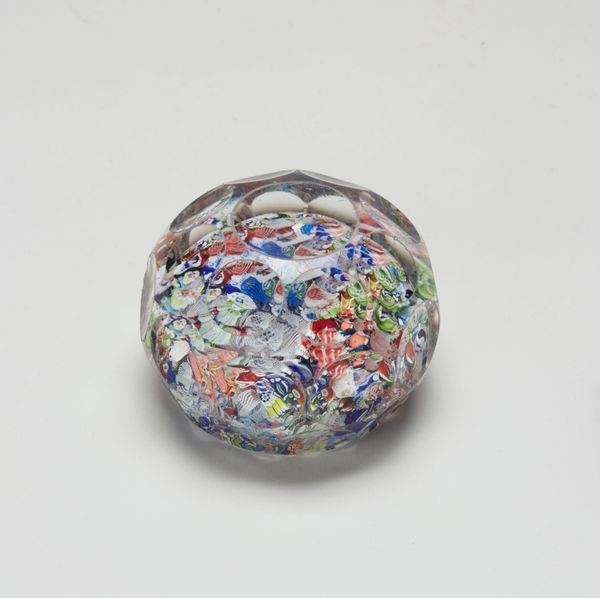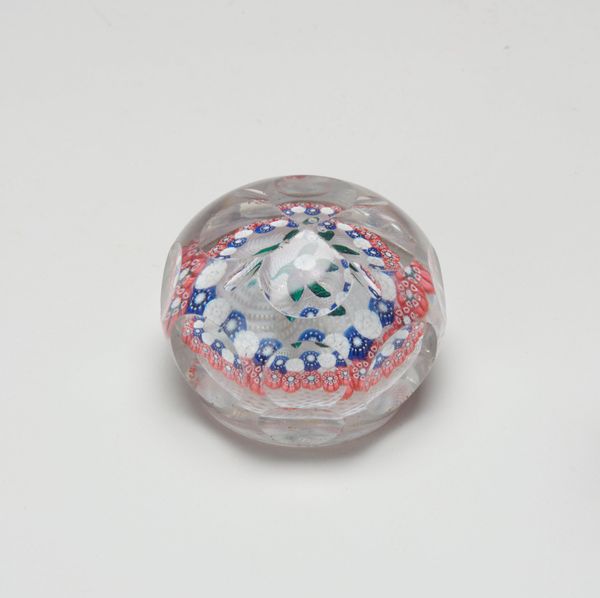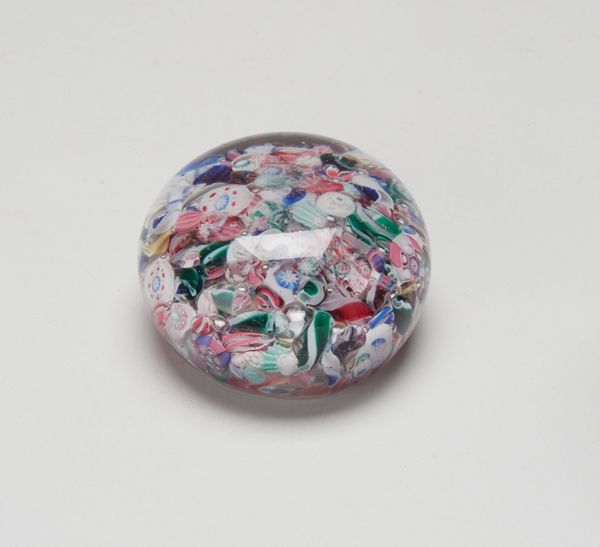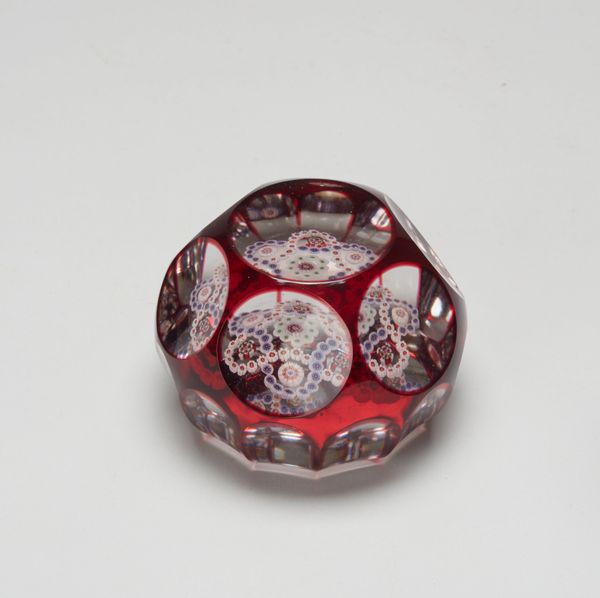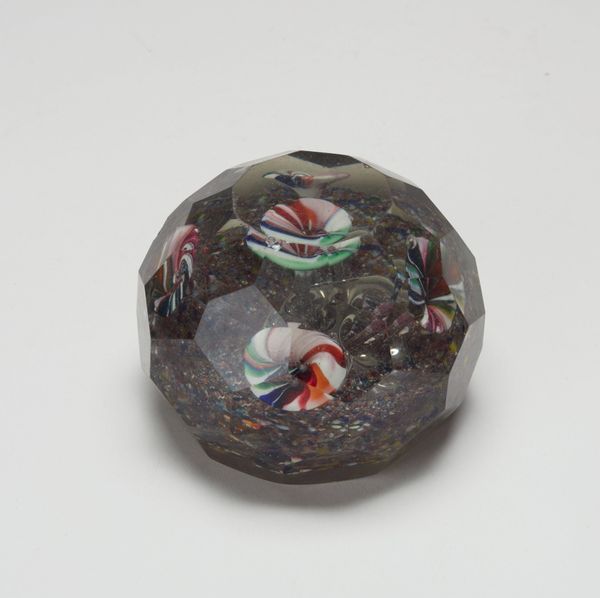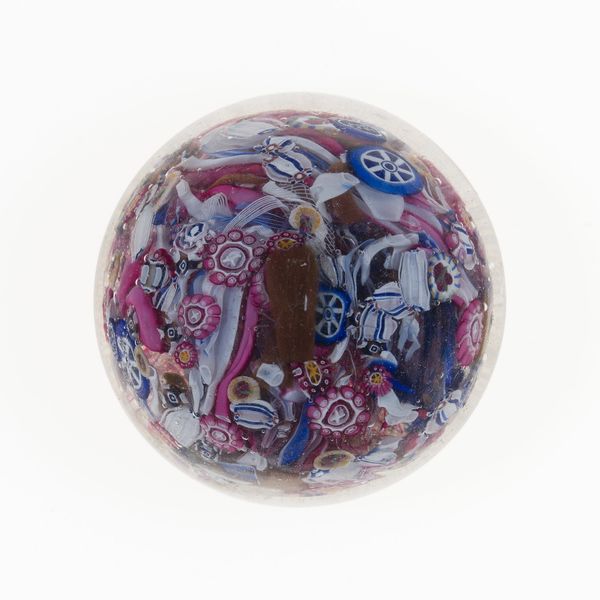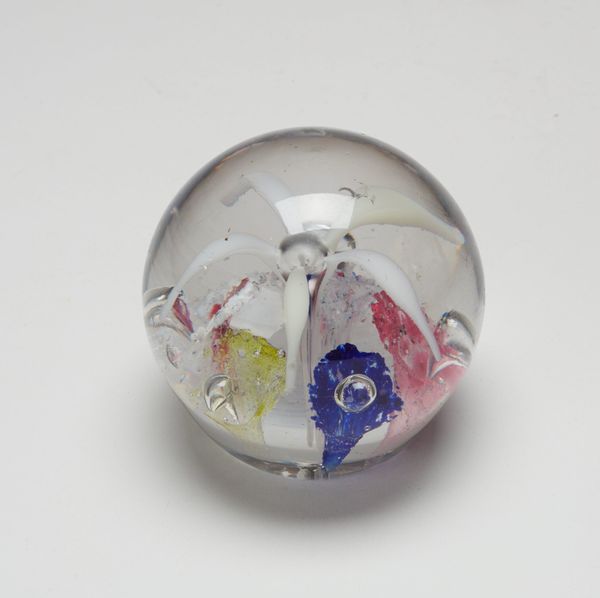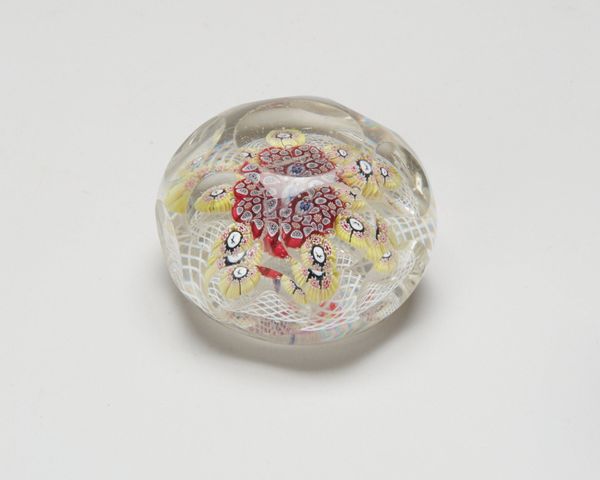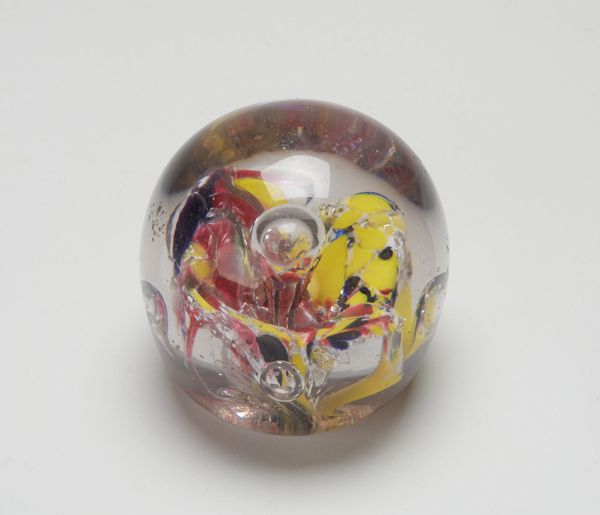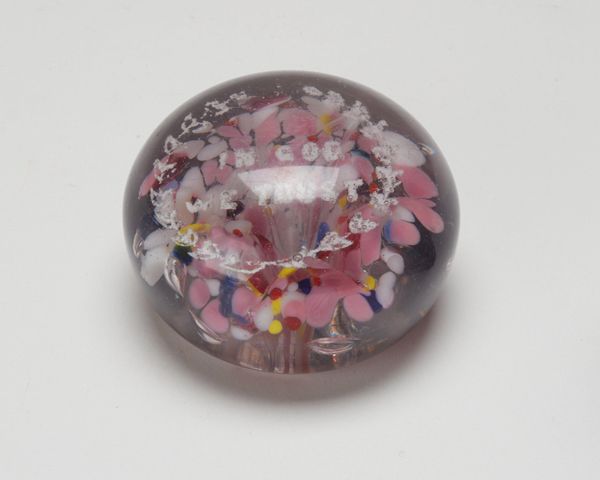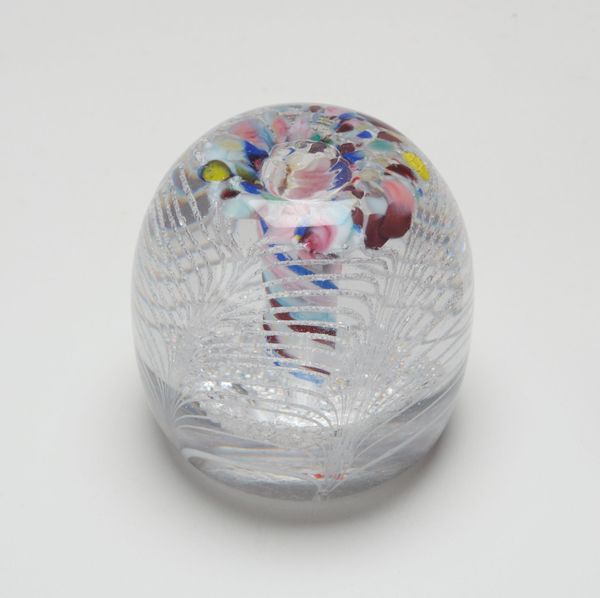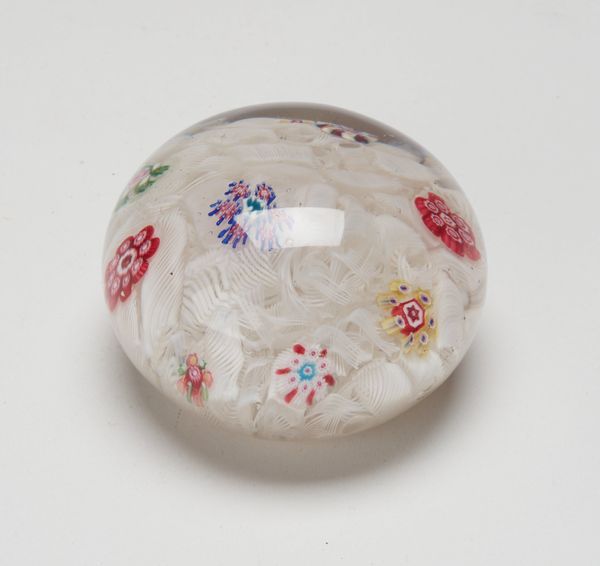
glass, sculpture
#
glass
#
geometric
#
sculpture
Dimensions: 1 7/8 x 3 1/4 x 3 1/4 in. (4.76 x 8.26 x 8.26 cm)
Copyright: Public Domain
Editor: Here we have "Paperweight," a glass sculpture made around 1850 by Baccarat Glass Works. It's captivating; a multitude of colors are suspended within the clear glass. What can you tell me about this piece? Curator: Well, consider the socio-political context of 1850. Europe, especially France, was on the cusp of massive industrial and social change. This paperweight, with its intricate, contained design, speaks to the values of that time – order, control, and a certain bourgeois aspiration for refinement amidst turbulent change. How does the controlled explosion of color strike you in that light? Editor: It makes me think about class structures, actually. Perhaps the colors being carefully arranged and held together reflect power dynamics within the broader French society. Like the wealthy elite holding everything together? Curator: Exactly! And who typically used such items? The emerging middle and upper classes, eager to display their status through meticulously crafted objects. Note also the geometry, imposing an artificial, controlled view on nature. It contrasts with Romanticism’s celebration of wild nature and aligns with early capitalist drive to control. How do you see the paperweight functioning as a symbolic object within that framework? Editor: That's a great point. Perhaps the colors also signify different groups, brought together but separated and observed through class. Thank you for clarifying it; I’ll remember this. Curator: The layers within art always show historical and social dynamics. Thank you, too.
Comments
No comments
Be the first to comment and join the conversation on the ultimate creative platform.
